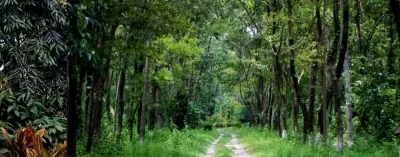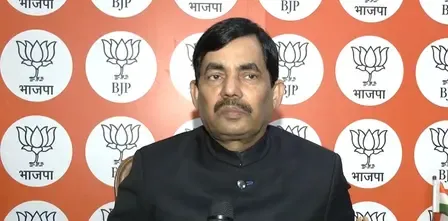Should the NGT Adopt a ‘Holistic’ Approach to Forest Loss in NE?

Synopsis
Key Takeaways
- NGT urged to adopt a holistic approach
- Formation of a joint committee proposed
- Use of technology for real-time monitoring
- Local community empowerment emphasized
- Need for ecological impact assessments highlighted
New Delhi, Oct 21 (NationPress) The National Green Tribunal (NGT) has been implored to adopt a “holistic” strategy to confront the disturbing decline of forest coverage in the northeastern region.
In a report submitted to the tribunal, Amicus Curiae Dhruv Tamta recommended the establishment of a joint committee comprising the Ministry of Environment, Forest and Climate Change (MoEF&CC), the Survey of India, and state forest authorities to tackle the issue of inter-state border encroachments.
Advocate Tamta emphasized that “safeguarding and enhancing our forests is not merely a policy objective; it is essential for securing our future”.
He advocated for the use of “satellite technology and AI to monitor forest health in real time” and called for empowering local communities through joint forest management (JFM) and eco-tourism initiatives.
The report also suggested creating a policy framework that collaborates with local councils to effectively manage unclassed state forests (USF), ensuring that local knowledge informs decision-making.
Additionally, the introduction of Ecological Impact Assessments (EIA) for extensive monoculture plantations will safeguard biodiversity and promote responsible land utilization.
Moreover, it proposed rigorous audit mechanisms for compensatory afforestation projects focusing on “survival rates, native species, and ecological functionality”, along with the promotion of agroforestry models that integrate “intelligent farming with healthier forests”.
The Amicus Curiae concluded that conservation should be “a collective endeavor rooted in empowerment and technology”, aligning with India’s National Forest Policy goal of achieving 33 percent forest cover nationwide and 66 percent in hilly areas.
The suo motu proceedings were triggered by a news report titled “Assam’s forests shrink by 83.92 sq. km in just two years”, referencing the 2023 India State of Forest Report (ISFR), which indicated that the northeastern region collectively lost 327.30 sq. km of forest cover, with Assam alone accounting for 83.92 sq. km of this loss.
In its affidavit, the Assam government acknowledged the ISFR findings but contended that the reported loss was exaggerated, citing a decadal gain of 748.65 sq. km in forest cover since 2013. It attributed recent declines to jhum cultivation in unclassed state forests, where the Forest Department has “no administrative control”, as well as to inter-state encroachment from Mizoram.
The Assam government stated that since over 10,000 hectares of cleared forest area are yet to regenerate, the “actual forest loss is minimal or non-existent”.
Meanwhile, Mizoram reported that between 2001 and 2023, its forest cover increased from 17,494 sq. km (82.98 percent of its geographical area) to 17,990.46 sq. km (85.34 percent). It attributed this growth to the Green Mizoram Programme, CAMPA, and the National Afforestation Programme, emphasizing that forest areas lost to development are being compensated through afforestation efforts.










